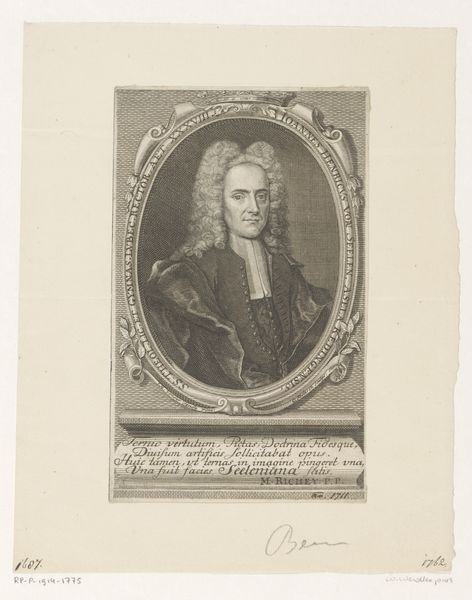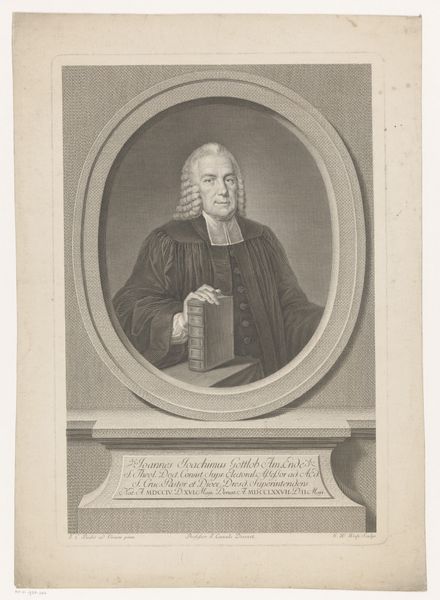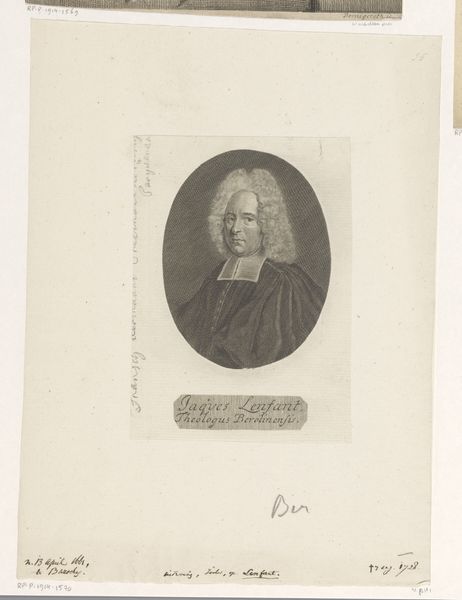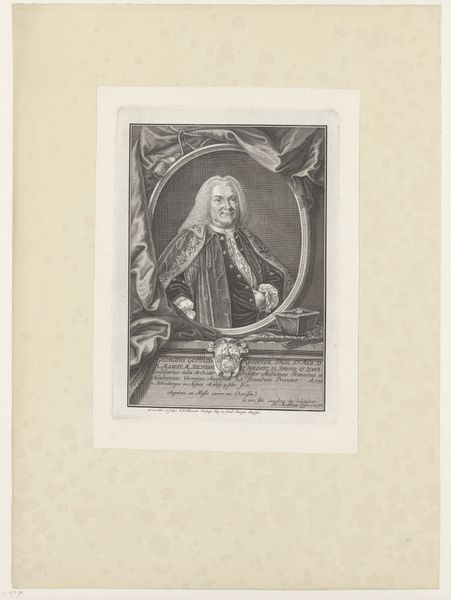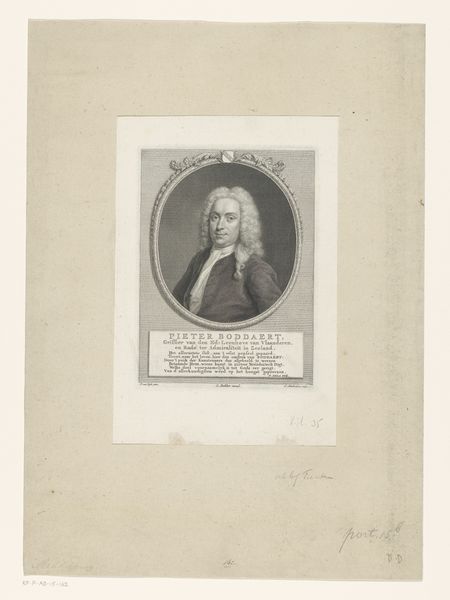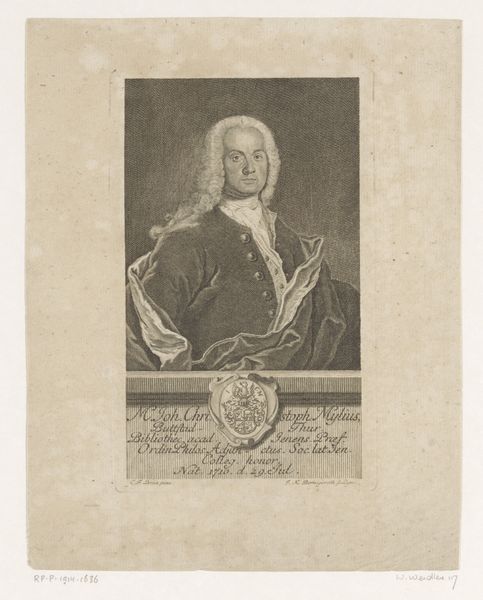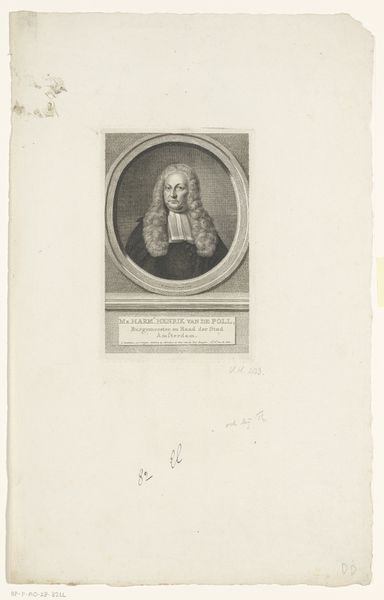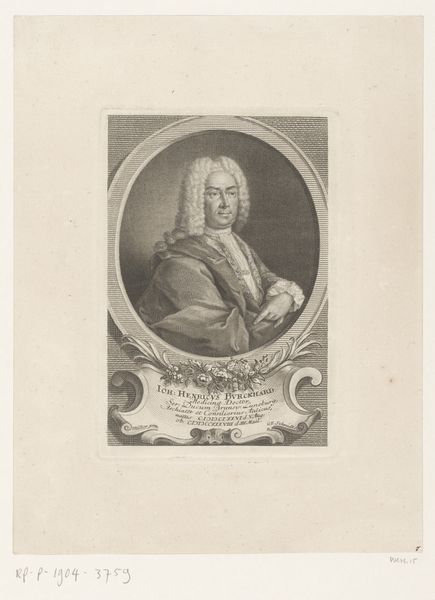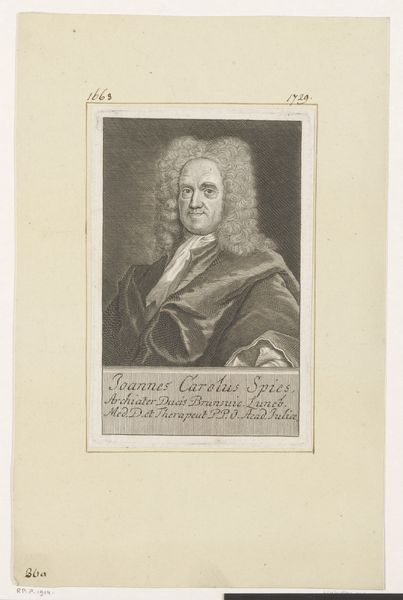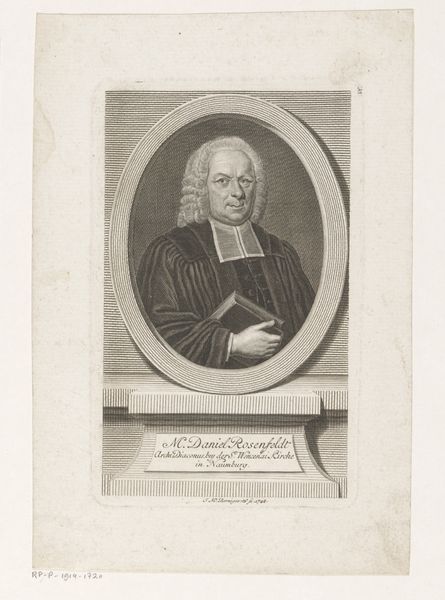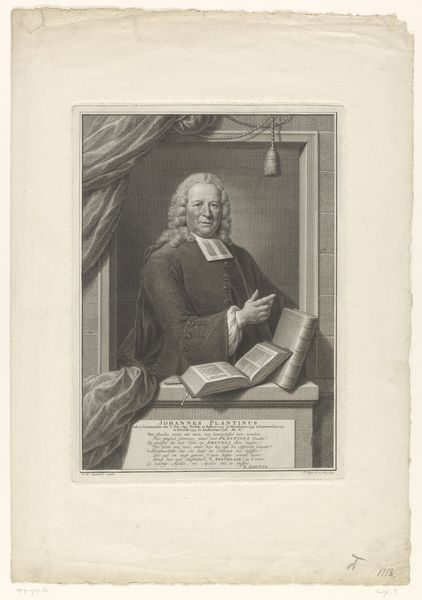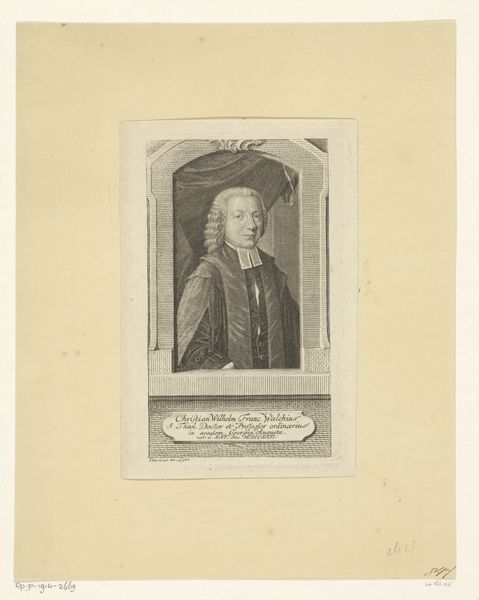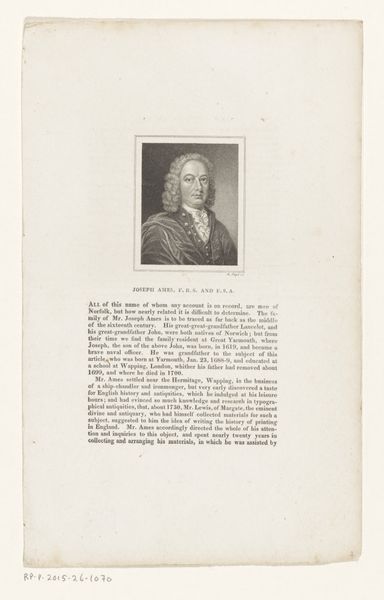
print, etching, paper, engraving
#
portrait
#
aged paper
#
toned paper
#
baroque
# print
#
etching
#
old engraving style
#
paper
#
genre-painting
#
history-painting
#
engraving
#
monochrome
Dimensions: height 299 mm, width 196 mm
Copyright: Rijks Museum: Open Domain
Curator: Here we have a fascinating engraving by Pieter Tanjé, created in 1753. It's titled "Portret van Johannes Oosterdijk Schacht" and resides here at the Rijksmuseum. What strikes you immediately about it? Editor: The gaze. It feels surprisingly direct and engaging, even across all those years. Also, I am really responding to this very cool monochrome style—somehow ancient and strikingly cool all at the same time. Curator: The tonal gradations achieved through etching and engraving are remarkable, considering the meticulous labor involved. Tanjé’s technique demonstrates a deep understanding of printmaking as a mode of disseminating images and solidifying social status. The materiality of the paper itself – you can almost feel the fibers – speaks to a culture of production and consumption. Editor: Absolutely! I'm now thinking about the engraver's hands, and also the sitter: I imagine the esteemed Johannes must have commissioned it—I feel it is supposed to transmit gravitas, academic stature...though, the overall effect strikes me as a tad stuffy, even for the Baroque! Curator: Indeed, these commissioned portraits served very specific purposes. They reinforced societal hierarchies and celebrated individual achievements. But considering that each line, each dot, represents countless hours of work...it asks us to consider the economics of artistic production in the 18th century. Editor: The frame almost becomes part of the portrait; do you agree? A stage. An emblem of how important Dr. Schacht wanted everyone to perceive him. I wonder, how did viewers at the time see the social politics embedded in this image? What's visible, and what is being obscured or revealed by such an artifact of baroque portraiture and status? Curator: Good questions. Prints like these were widely circulated, making art more accessible while also reinforcing class distinctions through the portrayal of specific individuals. It is an object deeply intertwined with the sociopolitical realities of its time. Editor: Thank you; viewing Tanjé's portrait now brings into high relief just how much the making and circulation of images reflect their society. It makes one ponder on what future viewers will extract about us from *our* profusion of imagery!
Comments
No comments
Be the first to comment and join the conversation on the ultimate creative platform.
